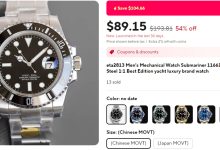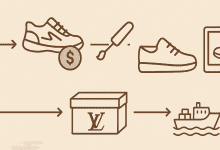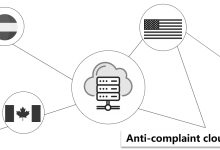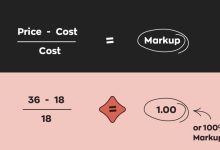In the world of cross-border eCommerce, we often hear the three letters DTC, which stands for Direct to Consumer. Simply put, it’s a business model where a brand bypasses third-party eCommerce platforms, wholesalers, and other intermediaries to build a direct, one-on-one connection with end consumers through its own e-commerce website.

In recent years, the DTC model has been heavily promoted by various cross-border eCommerce solution providers, and even hyped as a “small and beautiful” opportunity. Many SaaS companies advocate for the direct-to-consumer approach, emphasizing how brands can sell directly, form a closed marketing loop, and optimize profit margins. To support this, these SaaS providers offer full-chain DTC solutions — including website building, advertising, payment, and logistics.
There’s no denying that the DTC model has played a significant role in helping Chinese brands go global. Companies like SHEIN, for example, have rewritten the rules of this model and proven that it can create true unicorns — real legitimate and large-scale players in cross-border commerce.
However, for small and medium-sized sellers, I believe DTC is not a “small and beautiful” model. It’s a tough, capital-intensive game that doesn’t fit most cross-border eCommerce entrepreneurs.
Over the past few years, I’ve spoken with many DTC sellers — companies, small teams, and individuals — who are now desperate to pivot and survive. Some have even turned to replica cross-border eCommerce just to stay afloat. Many of these former DTC players had their own brands, supply chains, and experienced operations teams. Some even achieved impressive results in earlier years. But recently, whether staying with their old companies or starting anew, they’ve found it increasingly hard to generate meaningful results. Survival has become the main concern.
When talking about DTC and the so-called “small and beautiful” model, some frustrated entrepreneurs can’t help but curse:
“Whoever said DTC is ‘small and beautiful’ is full of crap.”
For individual DTC entrepreneurs, it’s extremely difficult — unless your product is so unique that no one else can replicate it, and you manage to keep it completely secret. Otherwise, once competitors find out, your so-called “small and beautiful” dream collapses almost overnight.
Why DTC Is So Hard
① Product Selection Is Extremely Difficult
In the DTC model, product selection is the core.
When running your own e-commerce website, you can use various tools to find so-called “hot-selling” products — for example, Shopify product research tools.

But be careful: what these tools show are historical data, meaning those products are already being sold — or have already peaked. The first wave of profit has been eaten by others, and what’s left for you are just the scraps of the market. You’re no longer the first to grab the opportunity; at best, you can flip some leftovers and earn a small margin.
The DTC sellers who truly succeed never just “follow” trends. They predict demand based on data and market insights. Their products are often unique, hard to find elsewhere, and not easily replaceable. Examples include DIY or custom-made products with strong supply chain control.
These product barriers allow them to not only seize the first wave of market profit but also sustain long-term growth.
② High Demands on the Operator
Running a DTC e-commerce website is a highly technical business that demands full-spectrum skills from the operator. From product research to content creation, from marketing to ad placement, from frontend design to after-sales support — every part must be handled personally.
It’s not just about patience — it’s also about endurance and strength.

A DTC entrepreneur must conduct market research, choose products, manage suppliers, find logistics partners, build the store, create content, design marketing campaigns, and handle advertising and promotions — a full-chain process where every link matters.
For most entrepreneurs, constant problems are normal. Over 95% of DTC beginners give up when faced with these challenges. Some small teams, after realizing how hard DTC truly is, try to outsource operations — but that’s just a waste of money.
Think about it: if DTC agencies were so capable, why would they still need clients?
Moreover, if the business owner doesn’t understand the DTC model, even a successful project later on would be impossible to lead or scale effectively.
③ Brand Building Is Harder Than It Looks
The so-called “small and beautiful” DTC model promotes brand building, but every brand needs a unique, emotionally resonant story.
Only when your brand story connects with consumers emotionally will they be willing to pay a premium for your products.
Take Cuddle Clones (cuddleclones.com) as an example: the company generates over $20 million in annual sales by creating custom, handmade replicas of people’s pets. Each product carries emotion and storytelling — that’s what gives the brand its power and value.

A brand brings added value beyond the product itself, allowing consumers to “buy for the brand.”
But precisely because of this, many choose shortcuts — such as selling replica products. We’ve seen this happen with Putian or Guangzhou sellers in China’s cross-border ecosystem.
For most small own e-commerce website entrepreneurs who just want to “buy low and sell high,” brand building is an almost impossible mission — like an ant trying to move an elephant.
A memorable brand takes years and massive capital to build. Without big investment and patience, it’s unrealistic.
China’s been talking about “brand globalization” for years, yet how many true unicorns like SHEIN have emerged?
Building a brand overseas is a long and difficult road.
④ The Barriers Are Very High
The biggest costs in the DTC model are traffic and time.
If your brand is unknown, you must buy traffic through ads to gain exposure.
If your products are not unique and have homogeneous competition, you must continuously create new content and creatives to convert that paid traffic.
Traffic and time are the tallest walls blocking most small entrepreneurs.
For new players, they are often insurmountable barriers.

While brand globalization is indeed the future path for Chinese manufacturing,and even the world’s manufacturing industry. it’s also a massive project — not something a small team of three to five people can achieve.
For small and medium-sized DTC sellers, the vision may be beautiful, but reality is harsh.
If you don’t have a grand global vision — and enough capital to support it — I honestly wouldn’t recommend chasing this DTC trend.
The dream is full, but reality is brutally thin.
💡 Reality Check for Small DTC Sellers
For small and mid-sized sellers without strong capital or funding, survival is the only truth.
In today’s ultra-competitive cross-border eCommerce market, not every path is shiny and perfect.
Sometimes, finding your own niche — even in the gray areas — becomes a practical way to stay alive.
🧭 Before chasing big dreams, make sure you have a path to survive.
Build resilience, understand your market deeply, and choose the model that truly fits your resources and risk tolerance.
 Custom E-commerce Solutions for High-Quality Designer-Inspired Fashion Replicas | Website Development, Dropshipping, Payment Integration for PayPal and Stripe, Ad Cloaking Services
Custom E-commerce Solutions for High-Quality Designer-Inspired Fashion Replicas | Website Development, Dropshipping, Payment Integration for PayPal and Stripe, Ad Cloaking Services



























![5 Best WordPress Themes for Replica Product International Trade Websites [Recommended]-Custom E-commerce Solutions for High-Quality Designer-Inspired Fashion Replicas | Website Development, Dropshipping, Payment Integration for PayPal and Stripe, Ad Cloaking Services](https://replicasmaster.com/wp-content/uploads/2025/06/1-1-220x150.jpg)
